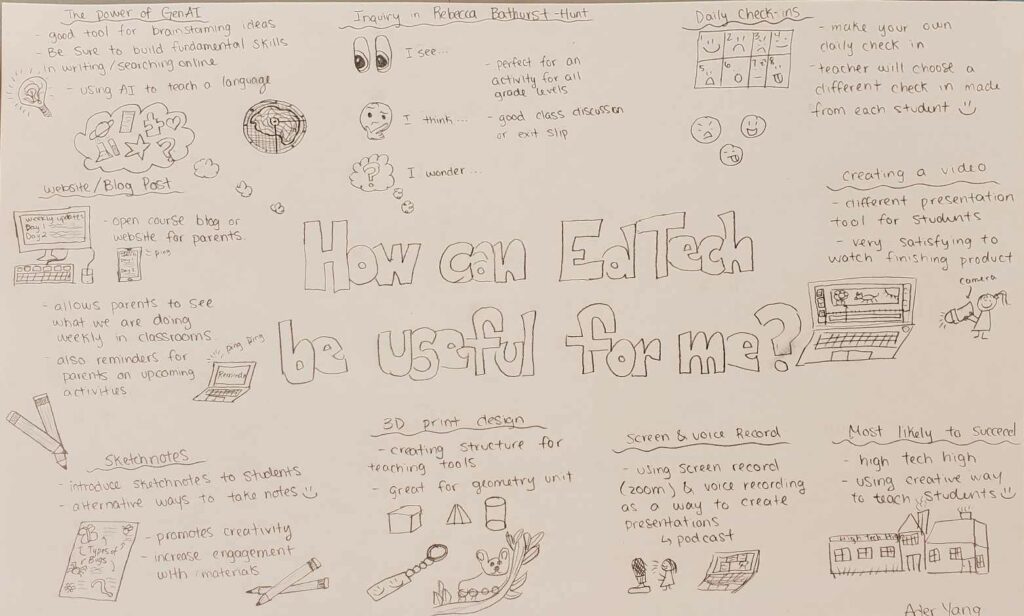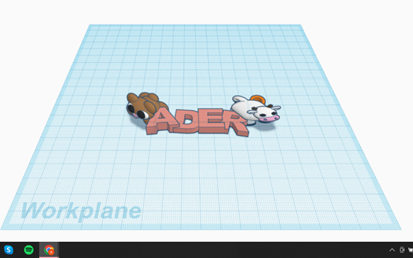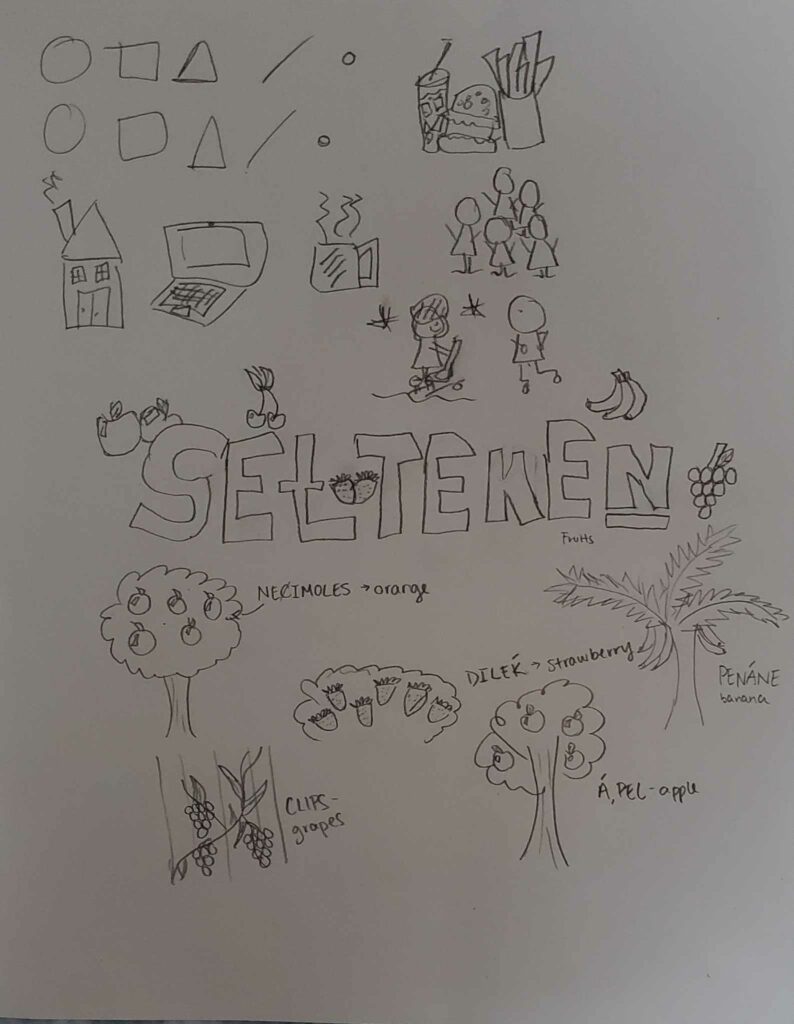

Add your own title and intro here (Change this under Settings -> General -> Tagline)

What are the potential pros and cons of using 3D design and print at the school and grade level you hope to teach at?
The grade range I hope to teach is Kindergarten to Grade 2.
Pros — Some pros about TinkerCad for the grade range I would like to teach is I can relate to the different geometric shapes in the geometry unit. If I don’t have the physical blocks of the shapes in my class, then I could pull up the TinkerCad resource and show my students the different 3D shapes. Another pro of using 3D design is promoting patience and problem solving skills. If there was a lesson that required students to use TinkerCad, students will need to have the patience to be able to learn how the program works. Additionally with problem solving skills, students would be able to develop those skills by being able to solve the problem themselves (aka fostering independence).
Cons — Some cons of using 3D design, is the amount of time needed to teach the students how to use the program. With that time, it would be easier to use a different resource with this age group. In addition, once students learn how to use TinkerCad, teacher will still have to circulate around the class to ensure students are understanding what is expected. Another con is student will be staring at the screens for a long period of time. In this generation, students are already exposed to a lot of screen time, so adding this resource on top of lessons will increase the amount of screen time students are getting.

Resource — Reviews from other educators about TinkerCad. Includes pros and cons, how to teach with Tinkercad, what is it, is it good for learning, overall learning ratings, real educator reviews, etc.
https://www.commonsense.org/education/reviews/tinkercad
Does the use of GenAI short circuit learning objective?
I don’t think GenAI short circuits learning objectives because GenAI can help dive deeper into the learning objectives or look at them in a border sense. When using GenAI, it saves educator’s time by giving them what they are looking for right off the bat instead of having to navigate through the resources to find what they need. It also reaches to other related resources online to help with whatever educators are looking for. That being said, in our class discussion, using AI to help with lesson planning is a great way to get started on brainstorming ideas. I remember there was one day Rob and I were looking at lesson plans on ChatGPT. It gave us a lot of cool interactive lesson plans within seconds and if we didn’t like that particular lesson, we just asked for another lesson plan. I kind of wish I knew about this sooner when I was thinking of ideas for my practicum.

Resource Title: In the Age of Generative AI, Learning Design is More Important than Ever by Jay Lynch
https://medium.com/@quixotic_scholar/in-the-age-of-generative-ai-learning-design-is-more-important-than-ever-2ab074f9158e


Some obstacles that I think educators face when they try to change their way of teaching is the back lash from either parents and/or students. For example, in the documentary “Most Likely to Succeed”, there was a section where a parent was concerned about the different teaching approaches the teacher was using. She was concerned about how her child was going to be able to succeed in SAT test, getting into college and others aspects that would hinder her success in the future. Another example, was where students were having an open conversation with with their teacher and admin about his teaching methods. I remember one of the students said he needed to teach them how to ace the test instead of teaching real life challenges. And that high school was about teaching them to do well on the test and university/college was about teaching real life situations. I feel like students are taught not to learn but taught how to memorize, which can be very detrimental in the long run. That being said, learning to ace the test in math makes students want to memorize the steps to solve the math problems instead of conceptualizing the math problem. The problem with this is students won’t know how to think outside the box when it comes to questions that are more abstract which may need the student to creatively/critically think to solve the problem.
In our last class, I also really enjoyed learning about Sketch Notes. The data behind using sketch notes to take notes was very surprising to me, because I don’t do well taking notes that way. I tend to hyper focus on my drawings and then I miss out on the material (I guess that can be considered as a con). Some pros would be making the notes more precise and depending on the person it can be very beneficial by summarizing the content being delivered.
© 2025 AY’S Blog
Theme by Anders Noren — Up ↑